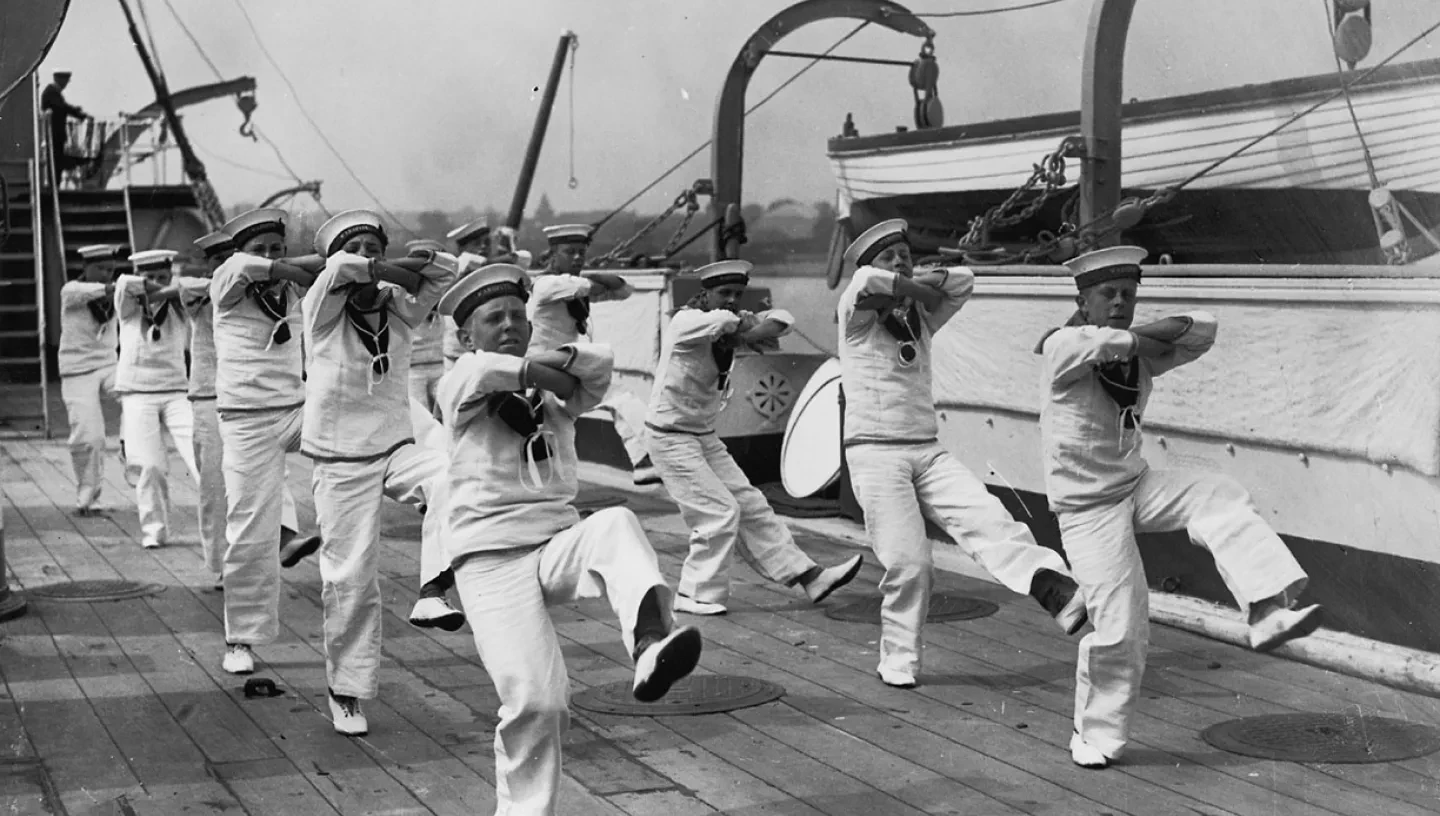
The sailor's hornpipe dance
The hornpipe dance hasn't always been associated with sailors and dancing on deck.
The hornpipe is a dance of various versions, traditionally performed in hard shoes. The ‘sailor’s hornpipe’ is one of the best-known forms of the dance.
Early origins of the hornpipe instrument and dance
There are references in Geoffrey Chaucer’s works to the instrument the hornpipe, which used to accompany the dance of the same name. 'Controve he welde and foule fayla with hornepypes of cornewayle', Chaucer wrote in reference to the hornpipes of Cornwall – a region known for its seafaring heritage.
Early hornpipe instruments apparently consisted of wooden pipes with spaced holes and mouthpieces made of horn. The earliest reference made to the dance, meanwhile, appears to be in a stage direction to the Digby Mystery performed about 1485: 'here mynstrellys on hornpipe' to conclude the performance.
The hornpipe becomes a sailor’s dance
It may have been about this time – the late 15th and early 16th centuries – that the dance became associated with sailors and the sea. It is easy to understand that the small space required for the dance, and the fact that no partner was necessary, made it particularly suitable for shipboard dancing.
Samuel Pepys referred to the dance in his diary, calling it 'The Jig of the Ship'. And Captain Cook is noted to have ordered his men to dance the hornpipe in order to keep them in good health in the cramped space of sailing ships of those days.